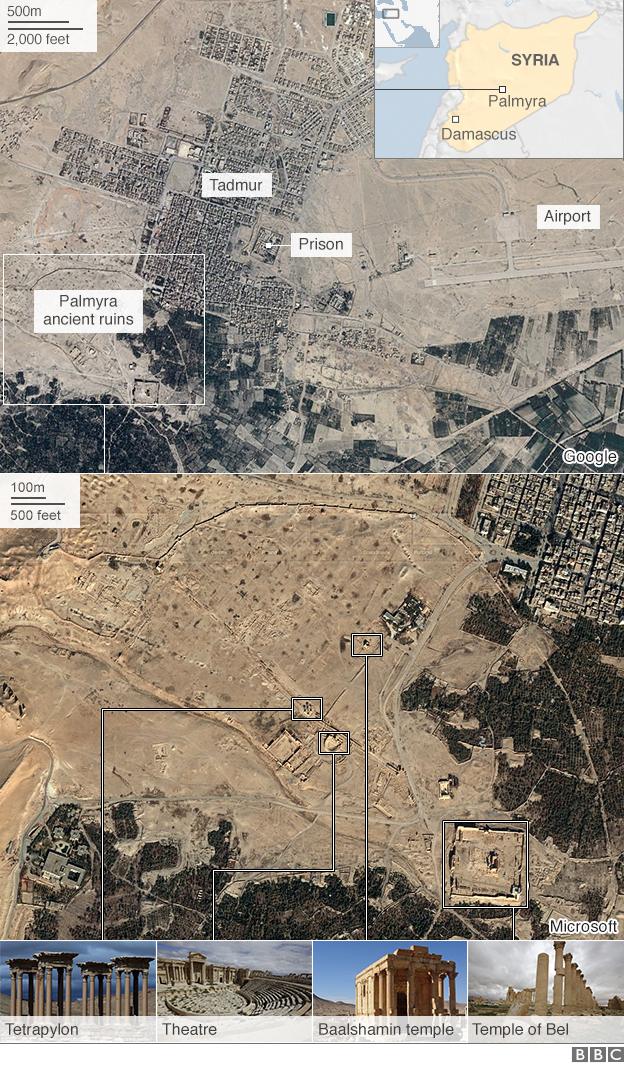Syria civil war: Palmyra damage in pictures
- Published
Drone footage has revealed the ancient city is largely still intact, as Ben Bland reports
New images have emerged from Palmyra, hours after Syrian troops recaptured it from the Islamic State group (IS).
The pictures reveal the extent of destruction wrought by the group during their 10-month occupation of the Unesco World Heritage site.
While some treasured monuments have been destroyed, much of the ancient city's ruins are said to remain intact.
Syria's antiquities chief Maamoun Abdulkarim said authorities had been "expecting the worst".
But he told the AFP news agency that "the landscape, in general, is in good shape".
He was planning to visit the city on Monday and start a survey of the ruins.
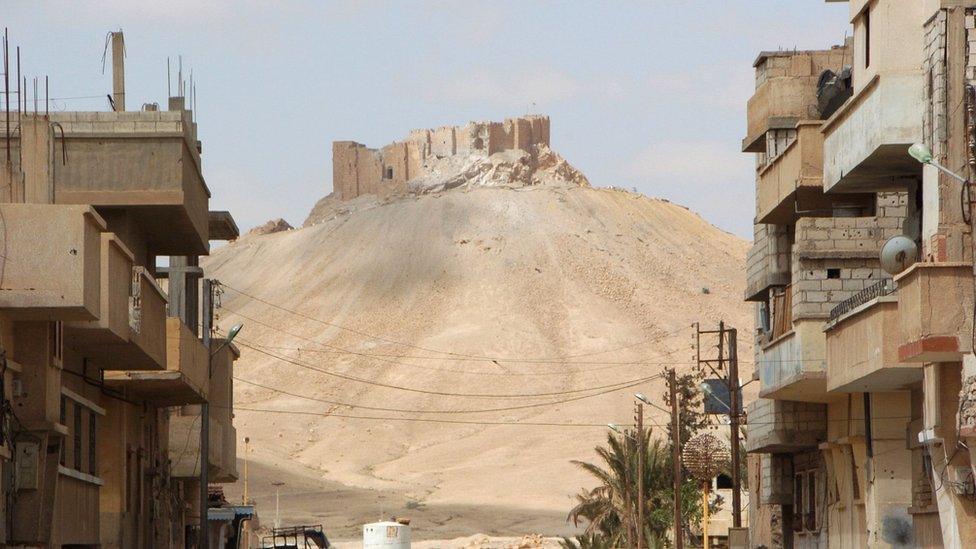
The citadel of Palmyra seen from the modern town on Sunday
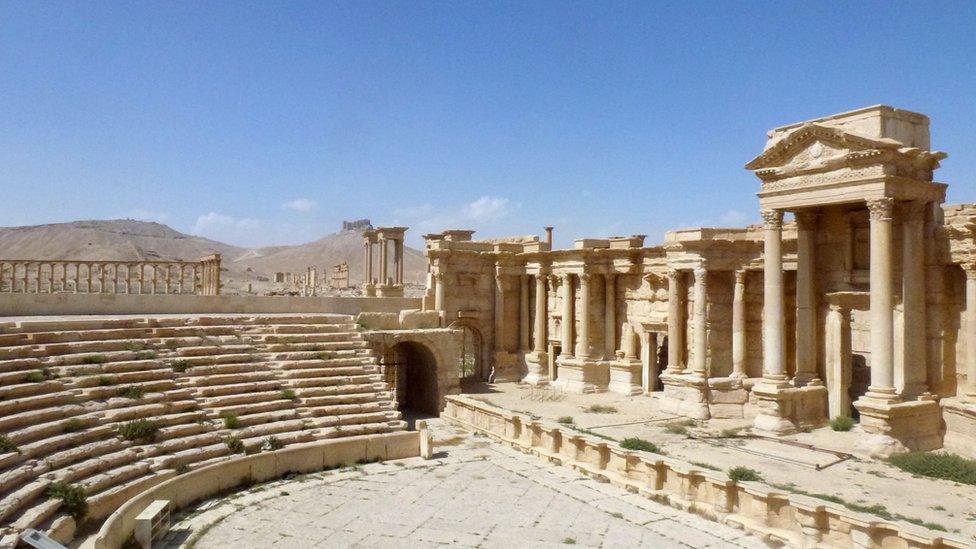
The theatre, used by IS for executions, remains intact
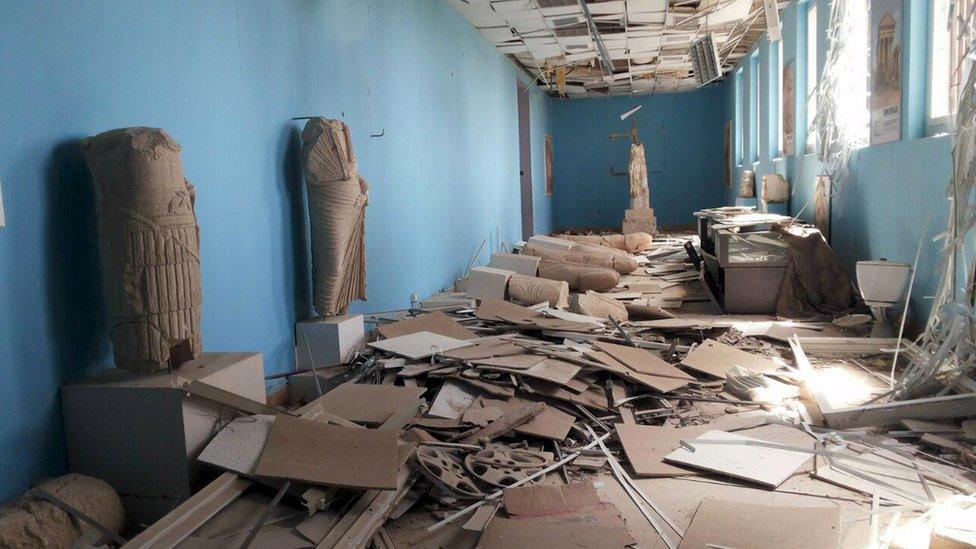
Artefacts lie damaged in the museum
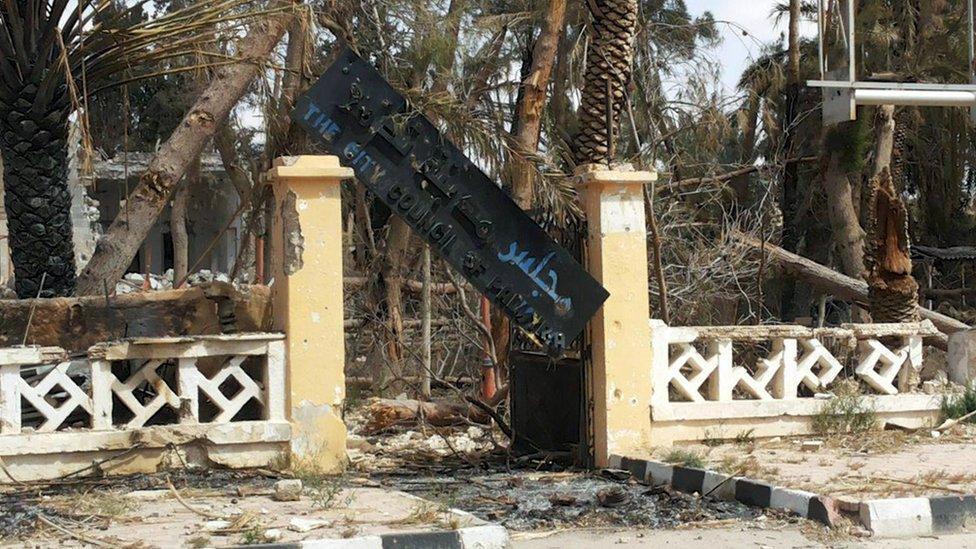
The Palmyra city council appears to have been severely damaged
President Bashar al-Assad hailed the recapture of Palmyra from IS as an "important achievement" in the "war on terrorism".
Military sources say the Syrian army now has "full control" after days of fighting backed by Russian air strikes.
Russian President Vladimir Putin congratulated Mr Assad, a Kremlin spokesman said.
The Kremlin said President Assad knew the Palmyra operation "would have been impossible without Russia's support".
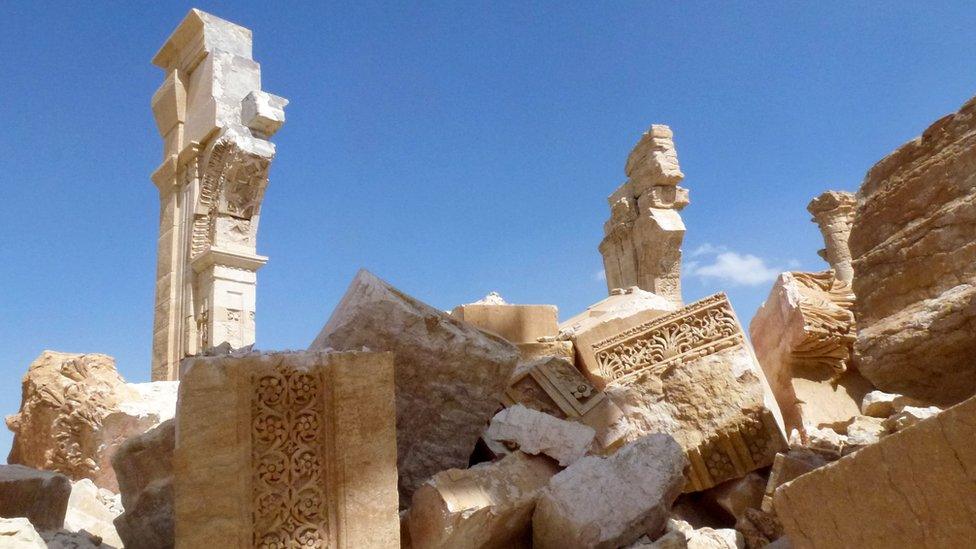
The remains of the Arch of Triumph, a nearly 2,000-year-old monument blown up by IS militants in October 2015

Palmyra was one of the "most important cultural centres of the ancient world", Unesco says
IS seized the Unesco World Heritage site and modern town in May 2015. Soon after, they killed the archaeologist who looked after the ruins for 40 years.
Palmyra is situated in a strategically important area on the road between the capital, Damascus, and the contested eastern city of Deir al-Zour.
When IS seized the city it destroyed archaeological sites, provoking global outrage. Two 2,000-year-old temples, an arch and funerary towers were left in ruins.
The jihadist group, which has also demolished several pre-Islamic sites in neighbouring Iraq, believes that such structures are idolatrous.
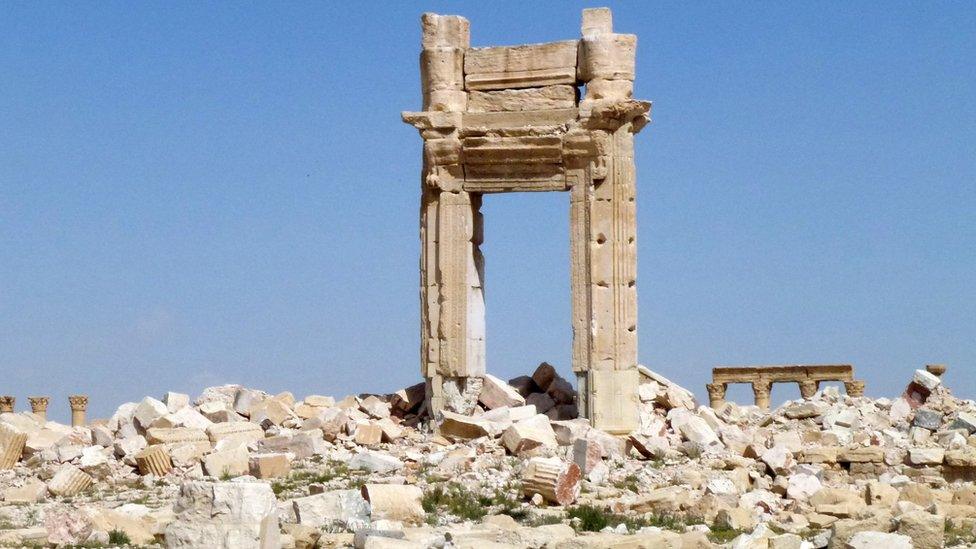
Remains of the entrance to the Temple of Bel, destroyed by IS in September 2015
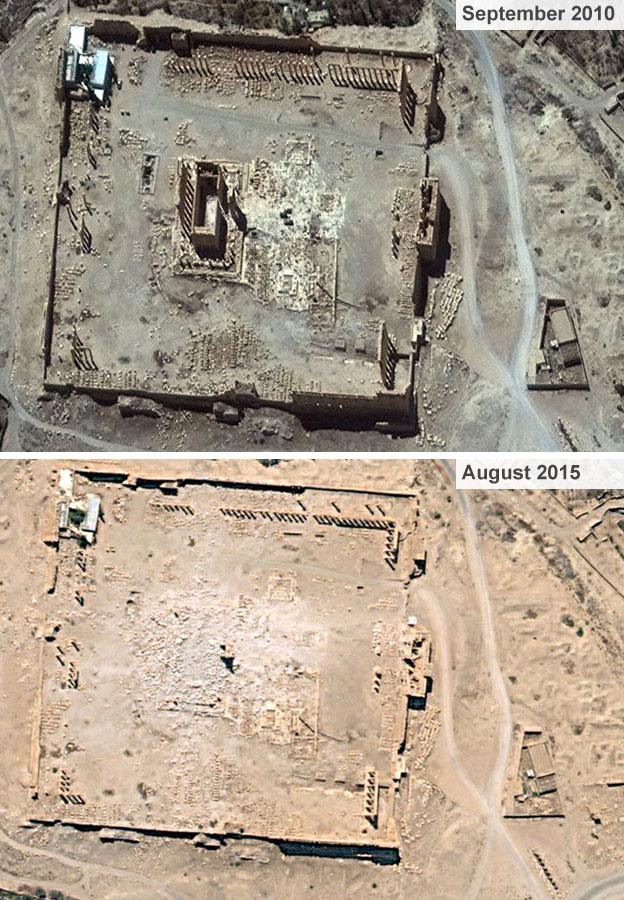
Satellite images show Palmyra's once majestic Temple of Bel before and after its destruction by Islamic State militants

A damaged artefact at the entrance of Palmyra museum
The Syrian Observatory for Human Rights, a UK-based monitoring group, said at least 400 IS fighters were killed in the battle for Palmyra.
In a statement, external released on Saturday, Russia's defence ministry said its strikes hit 158 IS targets, killing more than 100 militants.

Ancient city of Palmyra
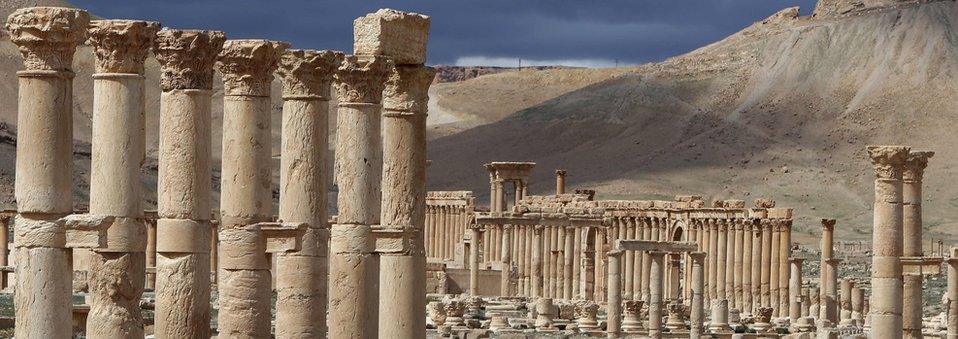
Site contains monumental ruins of great city, once one of the most important cultural centres of the ancient world
Art and architecture, from the 1st and 2nd centuries, combine Greco-Roman techniques with local traditions and Persian influences
More than 1,000 columns, a Roman aqueduct and a formidable necropolis of more than 500 tombs made up the archaeological site
More than 150,000 tourists visited Palmyra every year before the Syrian conflict
